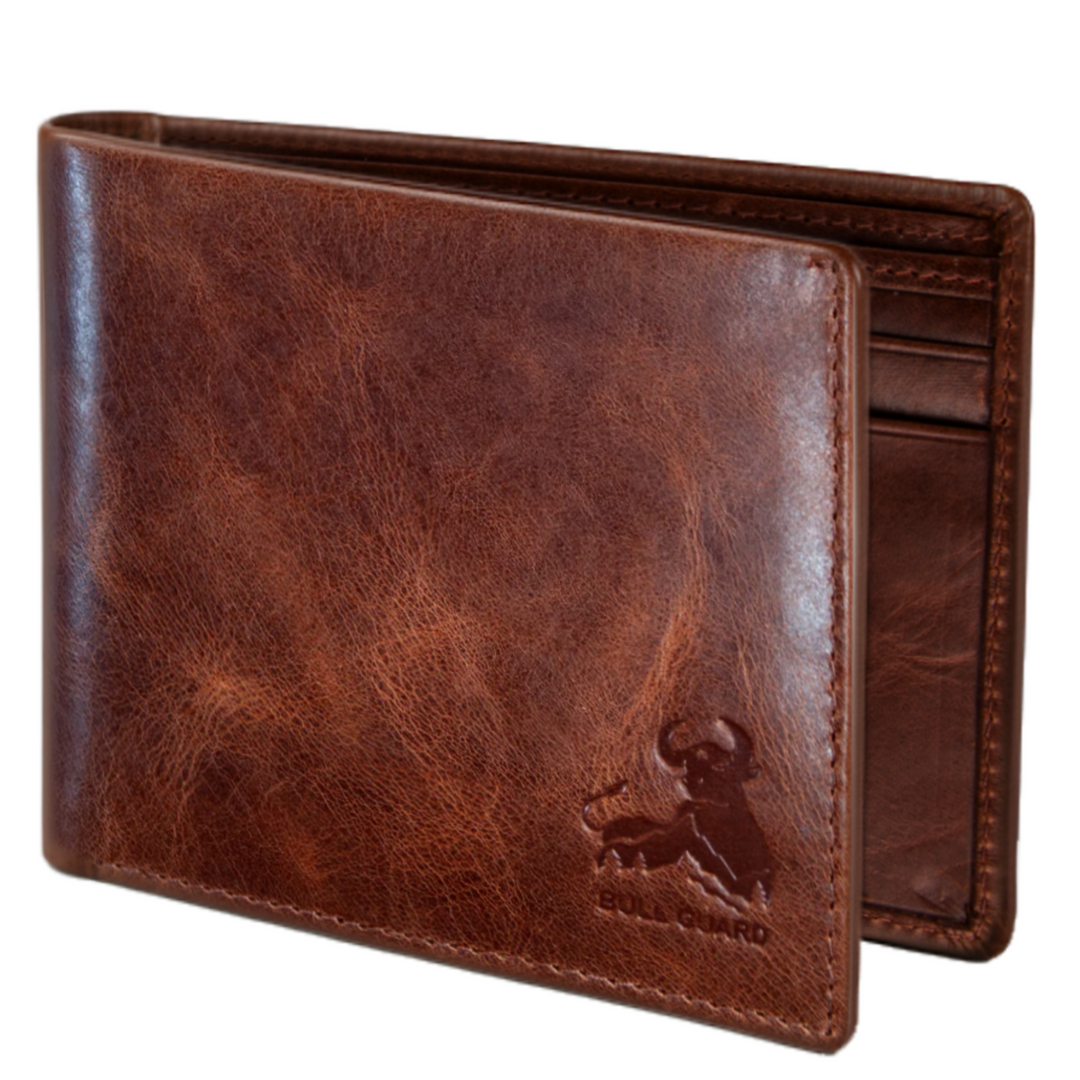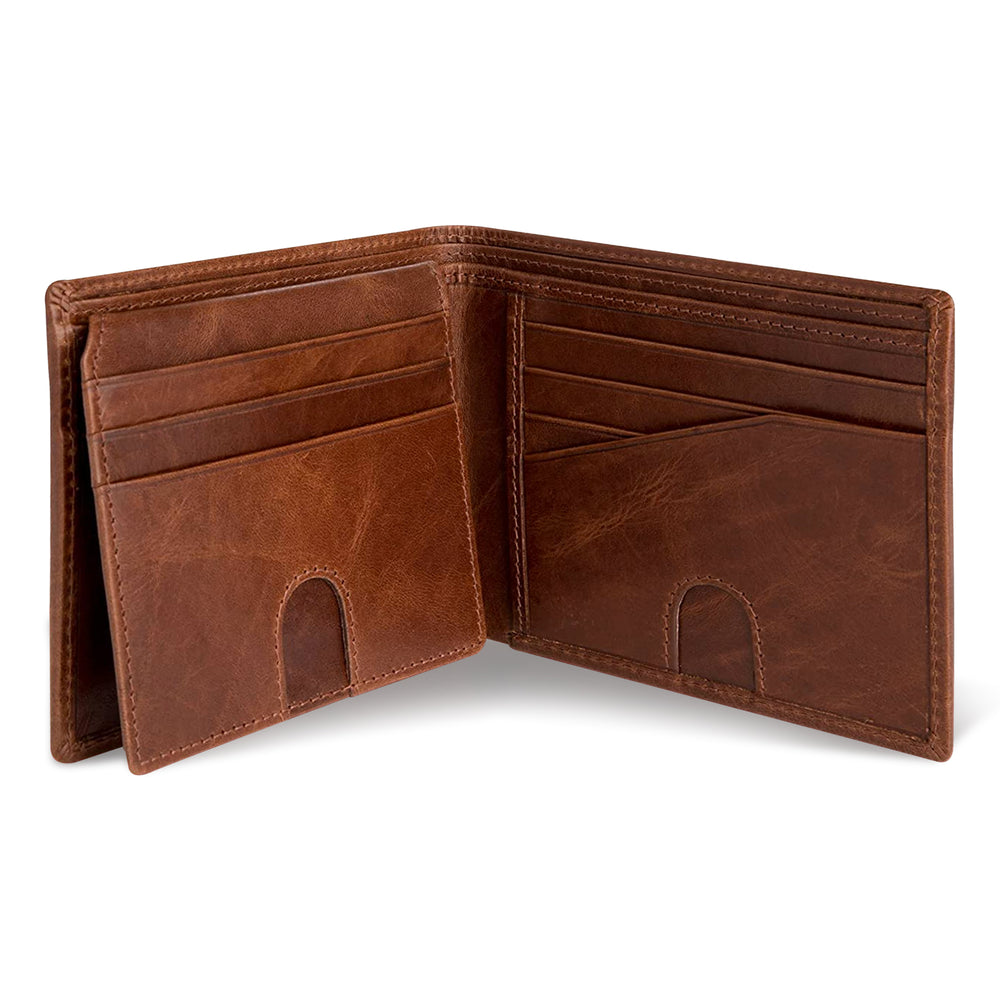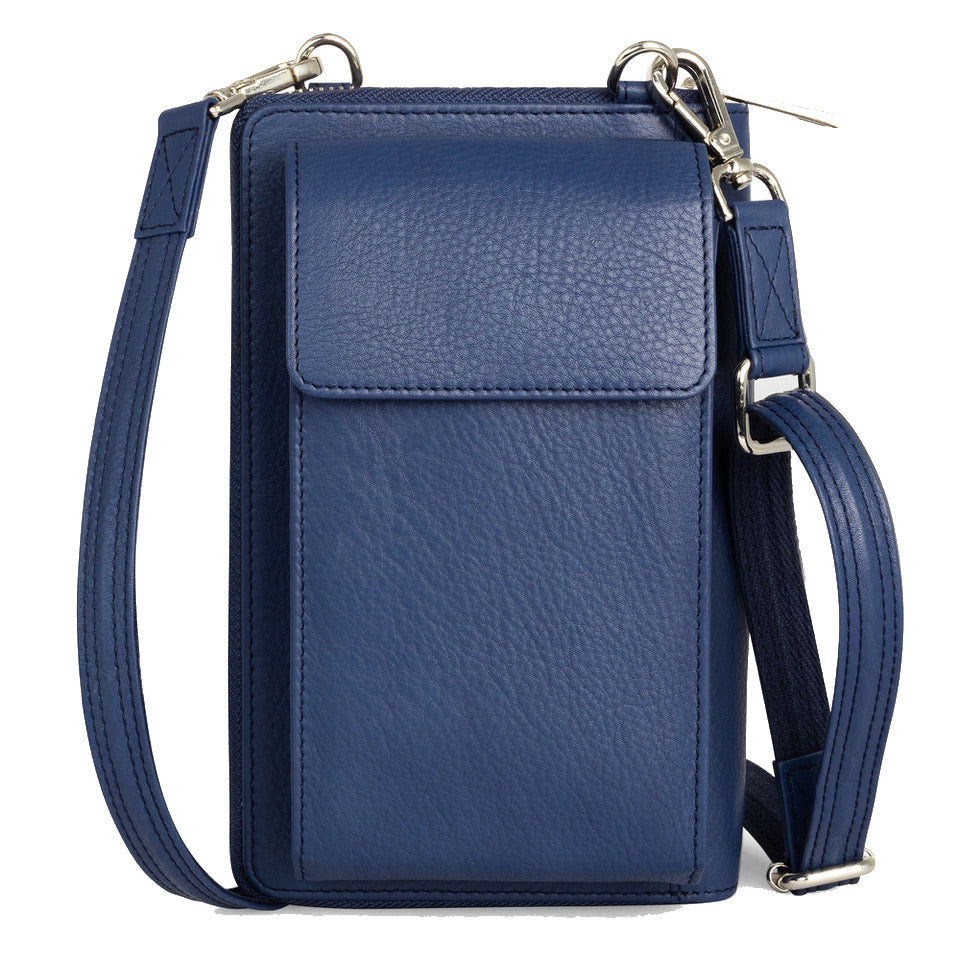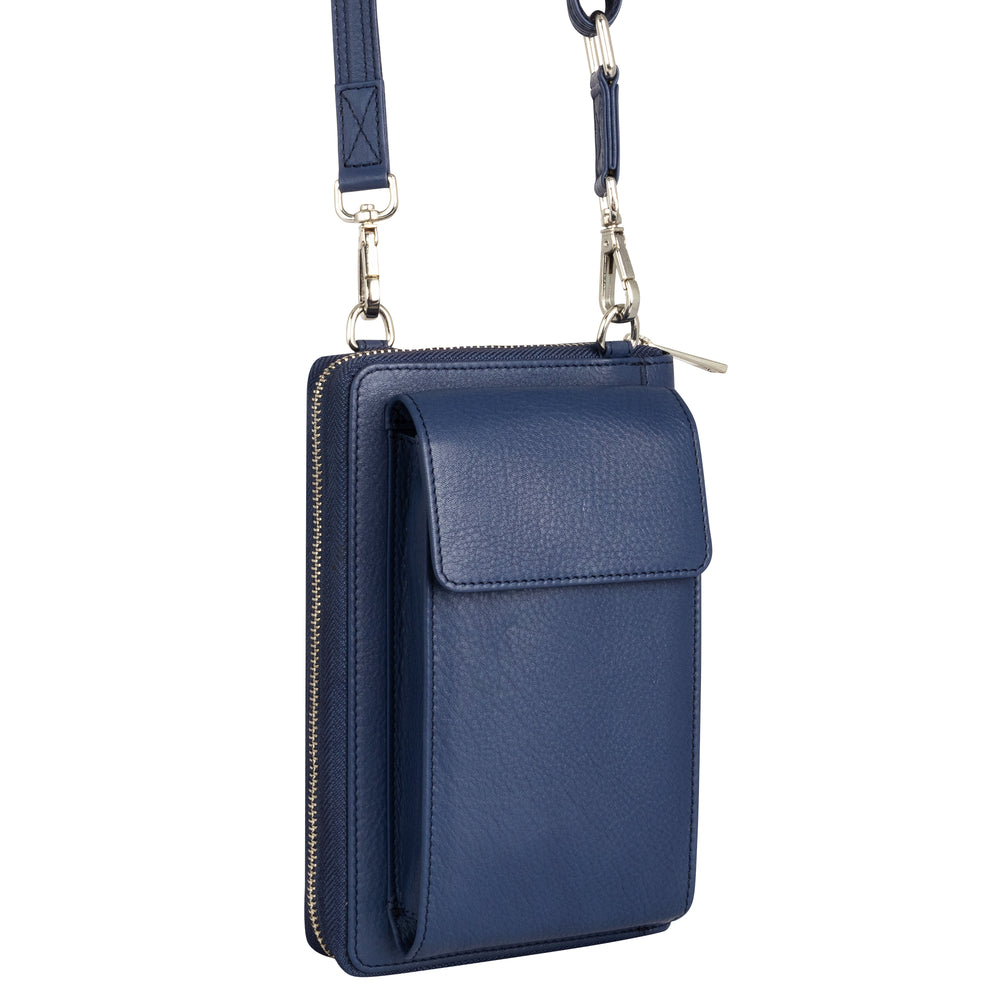Key Takeaways
- Losing a wallet can happen unexpectedly, even in busy, familiar places like airports.
- Experiencing a lost wallet firsthand highlights the importance of being truly prepared.
- Recovery from losing a wallet requires resilience and practical strategies.
- Designing quality products does not replace the need for personal preparedness.
Table of Contents
- The Day I Lost My Wallet, And What It Taught Me About True Preparedness
- What Does It Mean to Lose Your Wallet?
- Immediate Response: What To Do Right After Losing Your Wallet
- Securing Your Finances: Protecting Yourself After Wallet Loss
- Reporting & Replacing Essentials: A Practical Master List
- The Invisible Toll: Psychological Impact & Coping
- How to Prevent Losing Your Wallet in the Future
- Wallets Lost: Special Scenarios & Solutions
- Choosing Loss-Resistant Wallet Design
- The Bull Guard Advantage
- Living Boldly Beyond Loss
The Day I Lost My Wallet, And What It Taught Me About True Preparedness
Last October, I stood in the middle of a bustling Denver airport, frantically patting my jacket pockets with that sinking realization every traveler dreads, my wallet was gone. Not just any wallet, but my personal Bull Guard prototype, carrying everything from my driver's license to the business cards that had taken months to perfect. In that moment of losing wallet panic, I learned more about preparedness, recovery, and resilience than years of designing leather goods had taught me.
Whether your wallet vanished during a morning coffee run or disappeared somewhere between home and work, that hollow feeling in your stomach is universal. But here's what I discovered: losing your wallet isn't just about misplaced leather and plastic, it's about reclaiming control when life throws you a curveball. This guide walks you through every step of recovery and prevention, from immediate damage control to building bulletproof habits that ensure it never happens again.
What Does It Mean to Lose Your Wallet?

Your wallet isn't just a leather accessory, it's your daily companion that carries your identity, your access to the world, and often, pieces of your story. When I sketch each Bull Guard design, I think about how it becomes an extension of someone's life, holding everything from their grandmother's photo to the credit card that books their next adventure.
A typical wallet contains 8-12 essential items: driver's license, health insurance card, 2-4 credit or debit cards, workplace ID, gym membership, AAA card, and anywhere from $20-100 in cash. But the psychological weight goes deeper. Your wallet represents preparedness, self-sufficiency, and the confidence to navigate daily life without barriers.
Most people lose their wallets due to routine disruption, traveling, rushing through airport security, juggling kids and groceries, or simply breaking their usual pocket-checking ritual. The moment you realize it's gone, your brain immediately calculates not just financial exposure, but the hours of phone calls, DMV visits, and bureaucratic maze-running ahead.
Immediate Response: What To Do Right After Losing Your Wallet
Stay Calm and Retrace Your Steps
When I realized my wallet was missing in Denver, my first instinct was panic. But years of road-testing prototypes taught me that clarity beats chaos every time. Take three deep breaths and start with the obvious: empty every pocket, bag compartment, and car crevice. Check under car seats, between couch cushions, and in yesterday's jacket.
Call the last three places you visited. Restaurant managers, store clerks, and even rideshare drivers often find wallets and set them aside. Review your phone's location history and recent credit card transactions, they create a breadcrumb trail of where you've been. If you used Apple Pay or Google Pay recently, check those transaction logs for location clues.
Differentiating Lost vs. Stolen
Context matters for your next moves. If you remember setting your wallet down at a coffee shop, it's likely misplaced. If you felt someone bump into you on a crowded subway, suspect theft. Stolen wallets require immediate card cancellation and police reports. Lost wallets give you a small window to recover before taking protective measures.
When traveling, the stakes rise dramatically. A lost wallet abroad means potential embassy visits, emergency cash transfers, and complicated document replacement. Act fast, but don't assume the worst until you've exhausted recovery efforts.
Securing Your Finances: Protecting Yourself After Wallet Loss

Contact Your Banks and Card Providers Immediately
Modern banking apps let you freeze cards instantly, use this feature first, then call. Most major banks offer 24/7 hotlines with surprisingly short wait times. Have your Social Security number, recent transaction details, and account numbers ready. Credit cards offer better fraud protection than debit cards, with liability typically capped at $50 versus potentially $500 for debit.
Request expedited replacement cards if you're traveling or need immediate access. Many banks can overnight new cards for $15-25. Don't forget less obvious cards: HSA accounts, store credit cards, or that old backup Visa you rarely use but keep for emergencies.
Critical Timing: Report lost cards within 2 business days to minimize liability. After 60 days, you could be responsible for all fraudulent charges on debit cards.
Monitor Your Accounts and Prevent Fraud
Set up account alerts for all transactions over $1. Yes, you'll get notifications for your morning coffee, but you'll also catch unauthorized charges within minutes. Review statements daily for the first month, then weekly for three months. Thieves often test cards with small purchases before attempting larger fraud.
Consider a fraud alert with credit bureaus, it's free and requires creditors to verify your identity before opening new accounts. A credit freeze offers stronger protection but requires more effort to temporarily lift when you need legitimate credit checks. This is where Bull Guard's RFID-blocking technology proves its worth, preventing digital pickpocketing before it starts, though it can't help with a physically lost wallet.
Reporting & Replacing Essentials: A Practical Master List
File a Police Report
File a police report if you suspect theft, if your wallet contained checks, or if you need documentation for insurance claims. Most police departments accept online reports for non-violent property crimes. Bring a list of missing items, their approximate values, and when/where you last had your wallet. The report number becomes crucial for disputing fraudulent charges and replacing certain documents.
DMV and Driver's License
Most states let you report a lost license online and order a replacement for $20-35. You'll need your Social Security number, current address, and often a credit card for payment. Temporary paper licenses usually arrive by email within 24 hours, while permanent replacements take 7-10 business days. Some states require in-person visits if your license was stolen rather than lost.
All Your Essentials: Managing the Cascade of Replacements
Health insurance cards: Call the customer service number on your insurance app or website. Most insurers can email temporary cards immediately and mail permanent replacements within a week. Workplace IDs require contacting HR or security departments, expect a $10-25 replacement fee and possible temporary badge restrictions.
Membership and loyalty cards often get overlooked but add up quickly. Gym memberships, AAA cards, library cards, and store loyalty programs all need replacement. The good news? Most can be reissued instantly through mobile apps or quick customer service calls. Gift cards are trickier, if you have the card numbers or purchase receipts, retailers can often transfer balances to new cards.
The Invisible Toll: Psychological Impact & Coping

Common Emotional Responses
That night in Denver, I barely slept. My mind kept cycling through worst-case scenarios, someone using my cards, accessing my business accounts, or worse, stealing the design sketches I kept tucked behind my license. The psychological impact of losing wallet extends far beyond financial inconvenience. You've lost a piece of your preparedness, your ability to move through the world with confidence.
Self-blame hits hardest. "How could I be so careless?" becomes a mental refrain, especially when you're normally organized. Sleep disruption follows, your brain won't let you rest while feeling exposed. I found myself checking my phone obsessively for fraudulent charge notifications, even after freezing all my cards. This hypervigilance is normal but exhausting.
Strategies for Inner Calm and Constructive Action
Acceptance doesn't mean giving up, it means channeling anxiety into productive action. After my Denver experience, I created a systematic recovery checklist that transforms panic into purposeful steps. Write down every card, document, and membership you need to replace. Cross items off as you complete them. This visual progress calms the feeling of overwhelming chaos.
Reach out for support without embarrassment. Online communities like Reddit's personal finance forums offer practical advice from people who've navigated identical situations. Close friends can help with immediate needs, covering dinner, lending cash, or simply listening while you process the stress. Remember: this temporary disruption doesn't define your competence or worth.
How to Prevent Losing Your Wallet in the Future
Incorporate Technology: Trackers & Smart Wallets
GPS trackers work outdoors but die in buildings; Bluetooth trackers like AirTags excel at close-range finding but need nearby Apple devices for distant location. Bull Guard's AirTag-ready card holders solve the integration challenge elegantly, the tracker sits securely in a dedicated slot without adding bulk. Customer "On-the-Go Alex" credits his AirTag wallet with preventing three potential losses during business travel.
Smart wallet apps send notifications when your phone and wallet separate beyond a set distance. Tile, Samsung SmartTag, and AirTags each offer different ecosystems and battery life. Choose based on your phone type and travel patterns, frequent flyers benefit from GPS capability, while city dwellers find Bluetooth sufficient for most scenarios.
Develop Bulletproof Habits
The "touch-three-points" ritual saved my wallet countless times: before leaving any location, touch your phone, keys, and wallet in sequence. This muscle memory works even when distracted or rushed. Designate specific "homes" for your wallet, the same bowl by your front door, the same jacket pocket, the same spot in your car's console.
Restaurant and café visits pose the highest loss risk. Always place your wallet in the same pocket after paying, never leave it on tables while gathering belongings. Set phone reminders for high-risk situations: "Check for wallet" alerts before leaving airports, hotels, or any venue where you've removed it from your pocket.
Prevention Statistics: 89% of lost wallets occur during routine disruptions, travel, shopping with children, or rushing between appointments. Simple habit reinforcement prevents most losses.
Choose Your Wallet Wisely
Functional design prevents loss through better organization and awareness. Bull Guard customer "Organized Owen" credits his wallet's thumb-cut card slots with preventing drops, easier access means less fumbling and fewer opportunities to set it down absent-mindedly. RFID-blocking technology protects against digital theft even when your wallet stays safely in your possession.
Size matters for habit formation. Oversized wallets feel cumbersome, leading to more frequent removal and higher loss risk. Ultra-slim designs can slip out unnoticed. The sweet spot, like Bull Guard's classic bifold, provides enough substance to notice when missing while remaining comfortable for all-day carry. Choose leather that develops character over time; distinctive patina makes your wallet more recognizable and likely to be returned if found.
For more on choosing the right wallet for your needs, check out our guide to best wallets for men.
Wallets Lost: Special Scenarios & Solutions
At the Airport, on Public Transit, or in Travel Settings
Airport security checkpoints create perfect loss conditions, rushing, removing items, distractions. Contact TSA's lost and found immediately; they process thousands of forgotten wallets monthly and maintain detailed logs by date and checkpoint. Provide specific details: which terminal, approximate time, and distinctive wallet features. Many airports offer same-day item return if you're still in the area.
Public transit systems typically centralize lost items at main stations or headquarters. NYC's MTA, for example, processes lost property through their central office with online claim forms. Bus and subway operators often turn in found wallets at shift changes, so call back every few hours. Rideshare drivers frequently discover wallets after passengers exit, contact Uber or Lyft support immediately with your trip details.
If you want a wallet that's ideal for travel, see our picks for a good travel wallet.
Lost Wallet With All IDs: Stepwise Guide
Losing all identification creates a bureaucratic challenge but not an impossible one. Start with your bank, they can verify identity through security questions and account history, allowing you to freeze cards and access emergency funds. Social Security Administration accepts alternative identity verification including family member confirmation and employment records.
DMV replacement without ID requires bringing multiple secondary documents: utility bills, pay stubs, marriage certificates, or tax returns. Call ahead to confirm exactly which combinations your state accepts. Some states require sworn affidavits from family members who can verify your identity. The process takes longer but remains manageable with patience and documentation.
For official government guidance on replacing vital documents, visit usa.gov's replace vital documents page.
| Scenario | Immediate Action | Timeline | Key Challenge |
|---|---|---|---|
| Airport Loss | Contact TSA Lost & Found | Same day possible | Security checkpoint chaos |
| Transit Loss | Call system headquarters | 24-48 hours | Multiple collection points |
| All IDs Gone | Bank verification first | 1-2 weeks | Identity documentation |
| Travel Abroad | Embassy contact | 3-5 days | Document replacement |
Lost and Found, but...
Recovering your
wallet doesn't always mean victory. Sometimes what returns isn't quite what you lost, and that's when your next decisions become crucial.
When my wallet came back through a Good Samaritan last spring, I felt that familiar surge of relief. But as I sketched designs later that evening, something nagged at me. The leather felt different, not the supple patina I'd been developing, but somehow... handled. That's when I realized recovery requires its own protocol.
Signs Your Wallet May Have Been Compromised
Check immediately for missing cash, cards slightly out of order, or unfamiliar fingerprints on clear ID windows. Any gap in your timeline creates vulnerability. If your wallet spent hours or days in unknown hands, assume someone photographed your information, even if nothing appears missing.
Trust your instincts. If something feels off, treat it as compromised regardless of appearances. Replace cards, change PINs, and monitor accounts closely for weeks afterward.
Technology-Assisted Prevention
The best recovery strategy is never needing one. Modern wallet tracking transforms losing wallet anxiety into manageable inconvenience.
AirTags revolutionized wallet security for our customers like On-the-Go Alex, who travels constantly for work. His Bull Guard AirTag card case survived a three-city business trip where he left it in a Denver airport bathroom. The Find My app located it within minutes, still there, waiting on the counter.
Bluetooth trackers work differently than GPS. They create a mesh network through other users' devices, meaning your wallet can be found even when you're miles away. The precision varies by location density, perfect in cities, less reliable in rural areas.
Tracker Reality Check: No device prevents loss, but they transform "gone forever" into "temporary misplacement." Choose trackers based on your lifestyle, AirTags for Apple ecosystems, Tile for Android users, or Samsung SmartTags for Galaxy owners.
Battery life matters more than most realize. Replaceable batteries in Tile trackers offer longevity, while AirTags provide better precision but require complete replacement annually. Factor this ongoing cost into your decision.
Building Bulletproof Habits
Technology fails. Habits endure. The customers who never lose wallets share common behavioral patterns worth adopting.
The "pocket pat" ritual becomes unconscious after two weeks of practice. Touch phone, keys, wallet before leaving any location, restaurant booth, car seat, friend's couch. This three-second habit prevents 90% of wallet losses.
Designate wallet homes in every frequent location. Kitchen counter corner, bedroom nightstand, office desk drawer. Never place your wallet randomly, always in its designated spot. This consistency eliminates the frantic morning search that leads to rushed departures and forgotten essentials.
Visual confirmation beats assumption every time. Look at your wallet when placing it down, creating a mental snapshot of its location. This deliberate awareness prevents the "Did I bring my wallet?" doubt that haunts errands and travel.
For more tips on the best wallet habits and designs, see our wallets best resource.
Choosing Loss-Resistant Wallet Design
Not all wallets are created equal when it comes to preventing loss. Design choices directly impact how easily you misplace, forget, or lose track of your essential companion.
Slim profiles slide out of pockets unnoticed. Bulky wallets create uncomfortable pressure, making you constantly aware of their presence. The sweet spot lies in substantial enough to feel, streamlined enough to carry comfortably.
Our Trifold designs with their distinctive bulk remind you of their presence without becoming burdensome. The slight weight and dimension create tactile awareness, you notice immediately when it's missing.
Color Psychology in Wallet Recovery
Black wallets disappear into shadows, car seats, and dark surfaces. Distinctive colors, our Wild Mustang brown, Forest Green, or Rich Blue, stand out against most backgrounds, making them easier to spot when misplaced and more likely to be noticed by helpful strangers.
Gifting Jack discovered this accidentally when his distinctive green Bull Guard wallet fell from his Tesla at a charging station. The bright color caught another driver's attention, leading to its quick return. He's since bought several as gifts, specifically choosing memorable colors.
Organizational Features That Prevent Loss
Wallets that force you to dig and search get abandoned in frustration. Clean organization means quick access, reducing time spent with your wallet exposed and vulnerable.
Thumb-push slots in our designs eliminate the fumbling that leads to dropped wallets. Quick card access means less time with your wallet out of your control, fewer opportunities for loss.
The clear ID window serves double duty, convenience and security. When others can see your identification through the window, honest finders have immediate information to facilitate return.
The Bull Guard Advantage
Every Bull Guard wallet incorporates loss-prevention thinking into its fundamental design. This isn't marketing speak, it's practical engineering born from real-world testing.
Our RFID-blocking technology provides invisible security that works even when you don't. Cards can't be skimmed while walking through crowds or sitting in cafes, eliminating one major reason people need to replace lost wallets.
The distinctive Bull Guard aesthetic, whether our classic bull logo, eagle, or snake emblems, creates memorable identity. Lost wallets with character get returned more often than generic black rectangles.
Premium leather develops unique patina over time, making your wallet unmistakably yours. This personal character helps honest finders identify owners and provides talking points for recovery ("the brown wallet with the worn corner where you keep your transit card").
Customer-Proven Durability
Reliable C. Kiehl's Bull Guard wallet survived 18 months of daily back-pocket carry and still looks new. Durable construction means your wallet remains recognizable and trustworthy even after recovery from harsh conditions.
Quality stitching and full-grain leather withstand the stress of being dropped, stepped on, or weather-exposed during loss periods. Cheap wallets fall apart under stress, making recovery meaningless.
Living Boldly Beyond Loss
Losing wallet fears shouldn't dictate how you live. The goal isn't perfect prevention, it's resilient preparation.
When I finally replaced that recovered-but-compromised wallet, I realized something profound. The anxiety wasn't about the leather or even the cards, it was about feeling unprepared, vulnerable, out of control. A well-designed wallet becomes armor against uncertainty.
Every Bull Guard creation serves this deeper purpose. Yes, we organize your essentials and protect your information. But more fundamentally, we provide the quiet confidence that comes from carrying quality, the assurance that whatever life throws at you, you're equipped to handle it with grace.
Your wallet tells a story about who you are and how you move through the world. Make sure it's a story of strength, preparation, and unshakeable confidence.










